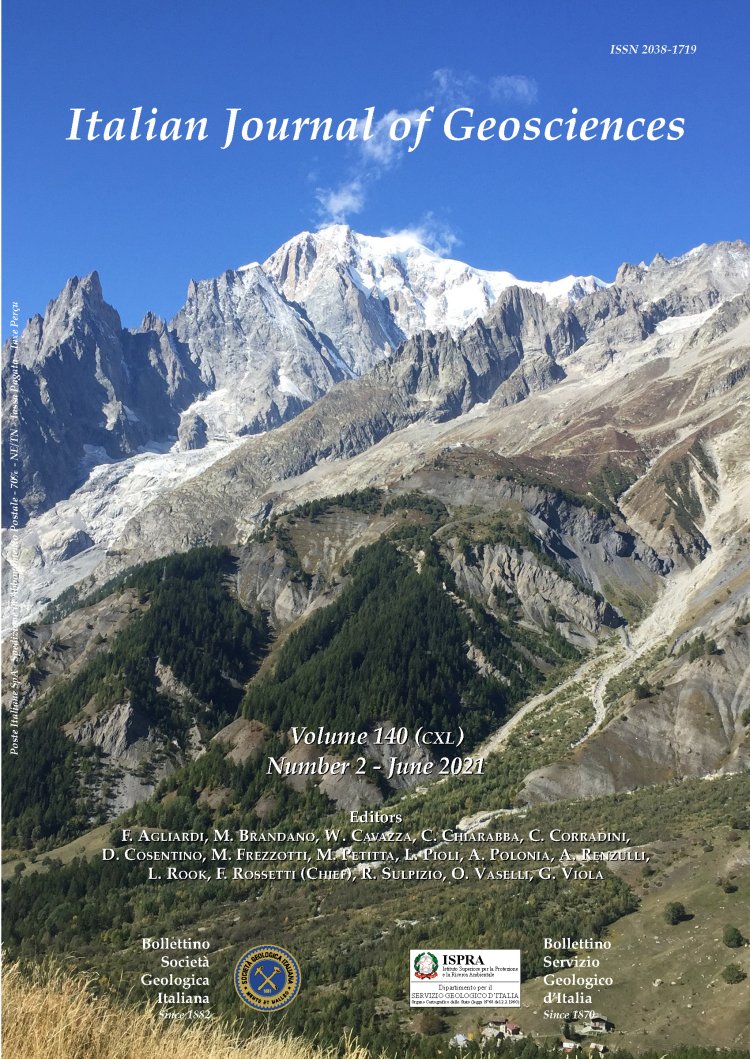

Facies, composition and provenance of the Agnone Flysch in the context of the early Messinian evolution of the southern Apennine foredeep (Molise, Italy)
Salvatore Milli (1,2), Salvatore Critelli (3), Emanuele Amicone (4), Gloria Campilongo (3), Francesco Muto (3), Vincenzo Tripodi (3), Daniel Tentori (2) & Francesco Perri (3)
(1) Dipartimento di Scienze della Terra, SAPIENZA Università di Roma, Piazzale Aldo Moro 5, 00185, Roma, Italy. E-mail: salvatore. milli@uniroma1.it
(2) Istituto di Geologia Ambientale e Geoingegneria (IGAG), Consiglio Nazionale delle Ricerche, Via Salaria km 29,300 - 00015 Montelibretti (RM), Italy
(3) Dipartimento di Biologia, Ecologia e Scienze della Terra, Uni- versità della Calabria, Ponte Pietro Bucci, Cubo 15B, 87036 Arcavaca- ta di Rende, CS, Italy
(4) Freelance geologist
Corresponding author e-mail: salvatore.milli@uniroma1.it
Volume: 140 (2021) f.2
Pages: 275-312
Abstract
Clastic wedges deposited in deep-marine turbidite systems along the circum-Mediterranean region represent key tectonic elements that record the structural growing of the Apennine orogenic belt over the Adria margin. One of these clastic wedges is represented by the Agnone Flysch turbidite succession deposited in the Lagonegro-Molise foredeep basin in the early Messinian, for which the depositional facies and the related processes, as well as the sandstone and mudstone composition are poorly known. A combined sedimentology and sedimentary petrology study has been conducted on this turbidite succession that provides new insight to define the basin architecture and the provenance of the Agnone Flysch during late Miocene. Facies analysis suggests that this turbidite succession is constituted by depositional lobes that were emplaced in a sector of the basin showing a variable morphological confinement with frontal and lateral slope on which turbidite deposits onlapped. Consequently, this topographic context controlled the lateral and vertical distribution of turbidite facies, which record the effects of erosive processes, as well as impact, rebound and reflection processes, in turn related to the flow deceleration induced by structurally-controlled basin confinement. Detailed sandstones compositional analysis indicates a complex unroofing history that reflects structural changes in the source rock units and depositional basin physiography. By combining the sandstone composition with information deduced from the X-ray diffraction (XRD) patterns after thermo-chemical treatments (heating and ethylene glycol treatments), it was possible to explain and predict the sedimentary evolution and geological processes affecting fine grained sediments and, thus, the relationship developed between source area and sedimentary basin. In particular, clay minerals data show that Agnone Flysch experienced an early diagenetic condition as showed by the occurrence of the I/S R0 and I/S R1 on the XRD pattern of the glycolated specimens. The sandstone composition (mainly quartzofeldspathic) shows an increase in the metamorphic rock fragments and a decrease of sedimentary lithics up-section. This compositional trend records, together with the paleocurrents data, a derivation of this material from a mountain range located in the Tyrrhenian sector and from the Calabrian arc terranes.
Keywords
Agnone Flysch, turbidite facies, composition, provenance, sandstone, late Miocene, southern Apennines.
Get Full Text Supplementary Material